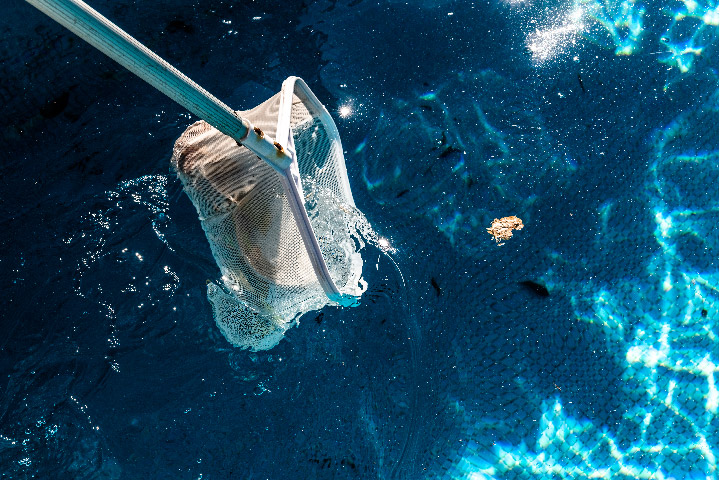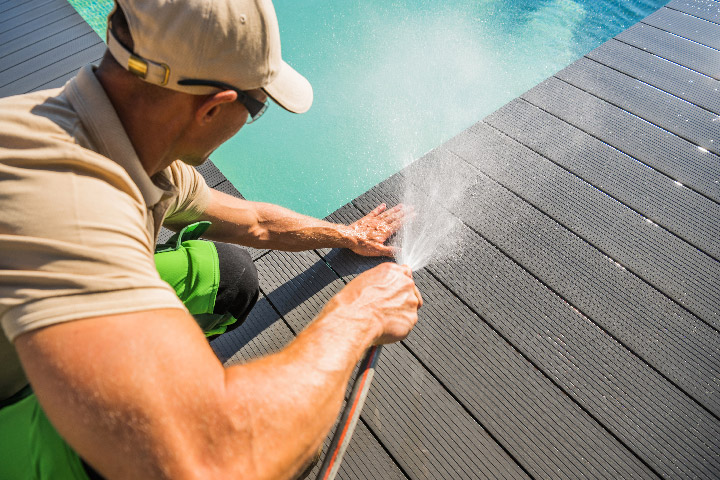
DIY Guide: Making Homemade Pool Flocculant for Crystal-Clear Water
Achieving crystal-clear pool water is a top priority for every pool owner, but sometimes standard filtration methods aren’t enough to remove fine particles and debris. In such cases, pool flocculant can be a game-changer. While commercial flocculants are readily available, making your own homemade pool flocculant is a cost-effective and environmentally friendly alternative. In this blog post, we’ll explore how to make homemade pool flocculant using simple ingredients and easy-to-follow methods.
What is Pool Flocculant?
Pool flocculant is a chemical additive that helps clarify pool water by causing suspended particles to clump together, making them easier to remove through filtration or vacuuming. Flocculants work by coagulating tiny particles, such as dirt, algae, and other debris, into larger clumps that can be easily captured by the pool’s filtration system.
Ingredients for Homemade Pool Flocculant:
- Alum (Aluminum Sulfate): Alum is a common flocculant used in water treatment and can be found in powdered form at most hardware or pool supply stores. It acts as a coagulant, binding suspended particles together to facilitate removal from the water.
- Water: Tap water or distilled water can be used as a solvent to dissolve the alum powder and create the flocculant solution.
DIY Methods for Making Homemade Pool Flocculant:
Method 1: Alum Solution
- Measure Ingredients: In a clean container, measure out the desired amount of alum powder based on your pool size and water condition. A typical dosage is approximately 1 tablespoon of alum per 10,000 gallons of pool water.
- Dissolve Alum: Add the alum powder to a bucket of warm water, stirring continuously until the powder is completely dissolved. Use a stirring stick or spoon to ensure thorough mixing.
- Allow Settling: Let the alum solution sit undisturbed for several hours or overnight to allow any undissolved particles to settle to the bottom of the container.
- Decant Clear Solution: Carefully pour off the clear liquid from the top of the container, leaving behind any sediment or residue at the bottom. The clear liquid is your homemade pool flocculant solution, ready to be added to the pool.
Method 2: Alum Sock
- Prepare Alum Sock: Place a clean sock or nylon stocking inside a plastic container or bucket. Fill the sock with alum powder, tying off the open end securely to create a makeshift filter bag.
- Soak in Water: Submerge the alum sock in a bucket of warm water, allowing the water to permeate the sock and dissolve the alum powder gradually.
- Wait for Dissolution: Allow the alum sock to soak in the water for several hours or overnight, periodically agitating or squeezing the sock to facilitate the release of the dissolved alum into the water.
- Use the Solution: Once the alum powder has fully dissolved, remove the alum sock from the bucket, and discard it. The water in the bucket is now your homemade pool flocculant solution, ready to be added to the pool.
Application of Homemade Pool Flocculant:
- Turn Off Pool Equipment: Before adding the homemade flocculant to the pool, turn off the pool pump and filtration system to allow the water to become still.
- Pour Flocculant Solution: Carefully pour the homemade flocculant solution around the perimeter of the pool, ensuring even distribution across the water surface.
- Wait for Settling: Allow the flocculant to work its magic by causing suspended particles to clump together and settle to the bottom of the pool. This process may take several hours or overnight, depending on the severity of the cloudiness.
- Vacuum or Backwash: Once the particles have settled, use a pool vacuum or backwash the filter to remove the sediment from the pool bottom. Be cautious not to disturb the settled particles while vacuuming.
- Monitor and Adjust: After vacuuming, monitor the water clarity and adjust filtration settings as needed to maintain optimal water quality. Repeat the flocculation process if necessary to achieve the desired level of clarity.
Safety Precautions:
- Always wear gloves and eye protection when handling alum powder to prevent skin and eye irritation.
- Keep children and pets away from the flocculant solution and pool area during the application and settling process.
- Dispose of any unused alum solution properly and according to local regulations.
Conclusion:
Making homemade pool flocculant is a simple and cost-effective way to achieve crystal-clear water in your swimming pool. By using readily available ingredients and following easy-to-follow methods, you can effectively clarify pool water and enjoy a pristine swimming experience. Whether you choose to dissolve alum powder in water or create an alum sock filter, homemade pool flocculant offers an environmentally friendly alternative to commercial products without sacrificing effectiveness. Experiment with different dosages and methods to find the best solution for your pool’s needs, and enjoy sparkling clean water all season long.




